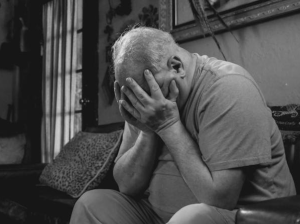Panic attacks can be terrifying. One moment, you’re going about your day; the next, a wave of overwhelming fear crashes over you, leaving you gasping for air, dizzy, and feeling utterly out of control. The physical sensations can be so intense that it feels like a heart attack or even death is imminent.
While panic attacks are incredibly unpleasant, they are not dangerous. With the right tools, you can learn to manage them and reclaim your sense of calm. Mindfulness techniques can be particularly helpful in dealing with panic attacks, offering strategies to navigate the physical and emotional storm within.
Here’s a deep dive into three effective mindfulness techniques you can use to manage panic attacks:
1. Anchoring Yourself in the Present: Breath Awareness
Panic attacks often propel us into a future-oriented state of worry or a past-oriented state of self-blame. Breath awareness, however, brings your focus back to the present moment, the only place where you have any control.
Focus on Your Breath: It’s easy to forget to breathe during a panic attack. Find a quiet spot if possible, and close your eyes if you feel comfortable. Begin by noticing your natural breath, feeling the rise and fall of your chest or abdomen. If your breathing is shallow, try slowing it down by counting to four on the inhale and six on the exhale.
5 Senses Grounding: Intensify your connection to the present moment by engaging all five senses. What do you see? Is it a bright light, a patterned wallpaper, or the leaves swaying outside? What do you hear? Maybe it’s traffic noise, birds chirping, or your own heartbeat. What do you feel? Is it the texture of your clothing, the coolness of the air, or the ground beneath your feet? Name these sensations silently in your mind, anchoring yourself firmly in the present.
Progressive Muscle Relaxation: This technique can help release physical tension that often accompanies panic attacks. Tense and relax different muscle groups one at a time. For example, clench your fists for a few seconds, then release, noticing the feeling of relaxation spread through your hands. Work your way up your body, tensing and releasing muscle groups until you feel a general sense of relaxation.
2. Observing Your Thoughts without Judgement:
During a panic attack, thoughts can become distorted and catastrophic. Mindfulness teaches you to observe your thoughts without judgment, de-identifying from their content.
The Thought Train: Imagine your thoughts are like a train passing through a station. You can see the train (the thought), but you don’t have to get on board (believe it). Notice the thoughts without getting caught up in their story. Label them as “just a thought” and gently redirect your attention to your breath or your surroundings.
Letting Go: Think of your thoughts as leaves floating down a stream. You can watch them pass by without needing to grab at them or be swept away by them. Let the thoughts come and go without clinging to them.
Acceptance: Accept that panic attacks are unpleasant but not dangerous. Acknowledge the thoughts and feelings associated with the attack without judgment. Fighting against them only adds to the struggle. Instead, observe them with detached awareness.
3. Cultivating Self-Compassion:
Panic attacks can be a source of shame and self-criticism. Mindfulness encourages self-compassion, a gentle and understanding approach towards yourself during this difficult experience.
Inner Kindness: Imagine a friend experiencing a panic attack. What would you say to them? Offer yourself the same kindness and understanding. Remind yourself that panic attacks are a normal response to stress and that you’re not alone.
Self-Soothing Touch: Place a comforting hand on your chest or arm and offer yourself some gentle physical reassurance. Mindfulness isn’t about ignoring your emotions; it’s about acknowledging them with care.
Visualization: Imagine a safe and calming place, a beach, a forest, or anywhere that evokes feelings of peace. Focus on the sensory details of this place: the sound of waves crashing, the smell of pine needles, or the warmth of the sun on your skin. This can help create a sense of safety and security during a panic attack.













